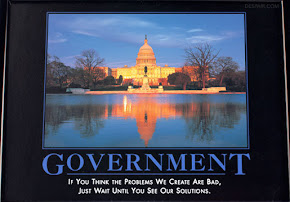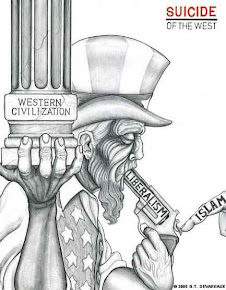Bruce Cole is the president of the American Revolution Center at Valley Forge, the first museum and education center dedicated to teaching the story of the American Revolution. He is also the art historian who served as the pre-Obama worship chairman of the National Endowment for the Arts. Last month the Wall Street Journal published his column "Freedom of speech personfied" on Norman Rockwell's series of paintings on Roosevelt's Four Freedoms. Cole judged Rockwell's depiction of Freedom of Speech to be of genuine merit:
In "Freedom of Speech,"...Rockwell found a subject that is active and public, a subject he could grasp and shape into his greatest painting forging traditional American illustration into a powerful and enduring work of art.
For inspiration, he thought of the New England town-hall meetings he knew so well, with their long tradition of democratic public debate--a tradition, as we have seen this summer, still very much alive. But we are not sure where Rockwell's scene occurs; a blackboard frames the speaker, but he stands behind a pew: school and church, two pillars of American life. The pamphlet held by the man closest to us reveals the subject of the meeting--a discussion of the town's annual report.
Using a classic pyramidal composition, Rockwell focuses attention on the standing speaker whose age, worn and stained jacket, rough hands with dirty fingernails, and plaid shirt set him apart from the neat coats, ties and white shirts of the older men in the audience. Although he is a working man, this figure, his face reminiscent of Lincoln's, is unafraid to voice his opinion--which we suspect is contrary to that of the others in the room. Standing tall, his mouth open, his shining eyes transfixed, he speaks his mind, untrammeled and unafraid. In Rockwell's vision he has become not only an active public participant in democracy, but a defender of it. He is the very embodiment of free speech, a living manifestation of that abstract right--an image that transforms principle, paint and, yes, creed, into an indelible image and a brilliant and beloved American icon still capable of inspiring millions world-wide.
The painting reminds us of much we have to be grateful for on this Thanksgiving.
UPDATE: We are also grateful for this message from Power Line readers from a part of the country that is close to our hearts:
I read your post on Rockwell's Four Freedoms, and Freedom of Speech in particular, and wanted to fill in a few blanks about where (and who) Rockwell painted.
Rockwell lived in Arlington, Vermont from 1938 to 1953 and during that time, he used local residents for his models -- many of whom are still alive here to tell their stories! The man in the Freedom of Speech painting was Carl Hess, who owned the local one pump gas station. The scene was from a meeting at the town hall.
My husband and I own Rockwell's Arlington home which is now a B & B -- and the art studio that he built when he lived here is still standing and is part of our rental property.
Also, if you are interested in seeing the original Four Freedoms, you must visit the Rockwell Museum in Stockbridge, MA where there are over 500 of his original paintings. The Four Freedoms are displayed in their own room and it is truly moving to see the "real" things rather than prints.
Best wishes!
Julia and Clint Dickens
Inn on Covered Bridge Green
Arlington, VT
www.coveredbridgegreen.com































No comments:
Post a Comment